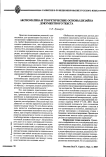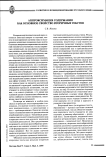Развитие и функционирование русского языка. Рубрика в журнале - Вестник Волгоградского государственного университета. Серия 2: Языкознание
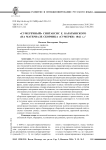
"Сумеречный" синтаксис Е. Баратынского (на материале сборника "Сумерки" 1842 г.)
Статья научная
В статье представлены результаты анализа структурно-синтаксической организации стихотворений, входящих в цикл Е. Баратынского «Сумерки»: выявлены особенности состава, членения предложений, установлены типы грамматических отношений и связей между конструкциями, охарактеризованы семантико-функциональный потенциал синтаксических единиц, корреляции между синтаксическим и ритмо-метрическим построением текста. Показано, что в «Сумерках» доминируют сложные синтаксические структуры, бульшую часть которых составляют бессоюзные двух- и многочастные образования, реализующие гипотаксисные отношения; отдельные синтаксические конструкции отражают синкретизм грамматических значений синтаксем; большое количество распространителей грамматического центра в цикле «Сумерки» обусловливает большую среднюю протяженность фразы, однако сверхдлинные фразы соседствуют в цикле с близкими устной разговорной речи короткими репликами, создавая изменение ритма и стилистические «сбои», углубляя асимметрию в построении текста. Установлено, что в заполнении метрического пространства важную роль играют однородные ряды и другие осложняющие конструкции. Выявлено, что предложения с утяжеляющими движение стиха обособленными оборотами характерны для стихотворений полиметрических и разностопных, а также 6-стопных ямба и дактиля. Простые конструкции доминируют в 5-стопном ямбе и 4-стопном хорее, использовавшихся в малых жанрах. Доказано, что в поэтической грамматике позднего Е. Баратынского отражена архаизаторская тенденция к структурно-семантическому и ритмо-мелодическому усложнению и проявляются черты, сближающие ее с барочной и классицистической одой, со стилем «плетения словес», языком библейского пророчества, церковной проповеди, духовного гимна и псалма.
Бесплатно
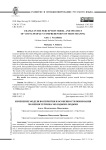
Change in the perception model and specifics of young people's comprehension of term meaning
Статья научная
The article discusses some changes that have been taking place in particular structures of mental lexicon. It presents the results of linguistic experiment aimed at revealing some shifts in perception of terms resulting from global virtualization of reality, which greatly affects all the structures of language consciousness, and transformation of information perception processes due to computerization. A new test was developed and used to get true information about dominant perceptional modality of the experiment participants. The results of the first stage of the experiment show that during the period of eleven years (2010-2021) the perception model of people aged from 18 to 20 has been shifting towards a digital type, when comprehension of a word meaning is based on logic, real facts, proofs. Some possible reasons for digital modality prevalence, the use of visual modalityas an auxiliary tool for the digital representational system, decrease in the significance of kinesthetic and auditory modalities are described. The results of the second stage of the experiment reveal a rather high level of emotional attitude to the stimuli connected with the professional sphere of digital generation. In this case the psychological emotionality of term meaning implies great interest, involvement and good understanding of the notion.
Бесплатно

Статья научная
The article presents fundamental positions of the linguistic school by Sofiya P. Lopushanskaya, Professor of Volgograd State University, and describes their theoretical advancement as being applied in the discourse studies on “Document text: history and modern state”. It explains that the study of business and administrative communication should be based on a clarified definition of the term document as its main constituent. The major goal of documental linguistics is to process a diverse linguistic analysis, discover objective knowledge and reason linguistic comprehension of the documental nature of communication. Within the framework of this review, some general principles of the document text analysis are presented. Firstly, they are statements on: the unity of the speech-making process approach; the interaction and coordination between language phenomena and speech production processes; extralinguistic determination of the modern document. Secondly, these statements were particularized in the linguistic school of Volgograd State University with the aim of introducing basic approaches to the study of the document text. They involve identifying the research object and its characteristics, analyzing a diverse range of texts to assess the genre and style productivity of the document text equally, and defining linguistic categories that are manifested in textual and lingual specificity. The article presents renewed facts on discursive and linguistic features of modern documents united by such text properties as consistency, structure, locality, peculiarities of the language representation of the author and addressee. It is noted that the text of the document can contain information of various qualitative types (factual, conceptual, subtextual), and it is the main constituent of the documental system and the business and administrative communication act. As the text reflects an objective and social reality, its compositional structure and semantic realization greatly depend on extralinguistic constrains. The profiles of the author (addresser) and addressee are presented as being reconstructed with the detailed observation of multi-level lingual and discursive means. The variability of the addressee profiles (the document text addressability) is presented in models of lexical, style, and text adaptation. The principles and methods of detailed description of the documet text specified in the article open up new opportunities and directions for studying document typology and distinguishing relevant features of the document communication.
Бесплатно
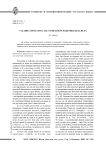
Evaluative connotations of proper names in Russian paremiology
Статья обзорная
Based on the study of Russian proverbs and sayings, thematic groups of paremias have been established, in which proper names have evaluative connotations; methods of education and types of estimated connotations of Russian anthroponyms are revealed
Бесплатно

Pragmatic markers in the aspect of communicative alignment
Статья научная
The article presents a model of communicative alignment in pragmatic markers (PM) use in Russian everyday dialogical communication. The main objectives are to check whether speakers coordinate their linguistic behavior not just with the use of lexemes or grammar forms or constructions, but also with PMs and how this actually works. We suppose that the use of PM by one of the speakers in the dialogue may increase the chances that the same PM will be used by the other speaker. In a Russian speech corpus “One Day of Speech” there were found 57 macro-episodes of communication where the PM koroche / koroche govorya was used by multiple speakers (46 episodes with 2 speakers using the PM, 11 - with 3 speakers). The analysis of PM use applying the system of quantitative parameters, worked out by the authors, has enabled them to note, that medium frequency of PM use rises when the number of speakers increases. PM used by speaker 1 is repeated by speaker 2, thus inducing speaker 3 to use the same PM, which influences the speech of the first two speakers respectively. The data analysis allows us to conclude that the original hypothesis of alignment in PMs has been proved for the marker we studied.
Бесплатно
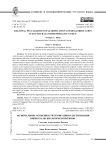
Regional peculiarities of glorification and deglorification in South Ural commemorative names
Статья научная
The article presents the results of cognitive, language-and-cultural and sociolinguistic analysis with the goal to distinguish the markers of regional identity in commemorative names, viewed as heroic ideologemes that help in actualizing ideological and axiological ideas of community. The empirical material, that was collected through upstanding sampling from regional web sites and survey, includes region commemorative names represented by nominations of outstanding people and historical events that took place in Chelyabinsk region. Considering cultural history of the territory, the commemorative names could remain in the regional consciousness for a long time without changing the original content. However, the original forms might either be simplified without losing the heroic sense or in the process of transonymization they might fail to keep it in folk naming, undergo renaming, or disappear from the local language landspace. Deglorification may be presented as complete or partial loss of heroic connotations in commemorative names. Heroic meaning of a toponym or microtoponym is kept on in cases of partial deglorification, though being specified by some positive connotations associated with the attitude of the local people to the commemorative name. Heroic meaning of commemorative nomination is faded out in cases of complete deglorification, thus reflecting ironical or contemptuous attitude of the South Ural people to transformed toponyms or microtoponyms. Commemorative toponyms and microtoponyms demonstrate reference to folk nomination; whereas recurrent usage of the same folk names in the answers to the survey is viewed as a reliable proof that regional place names and minor place names are markers of regional identity in the language consciousness of the South Ural people. The results of the study are supposed to be included in the Dictionary of Chelyabinsk regional lexicon.
Бесплатно
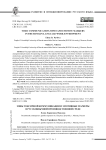
Toxic communication zones and emotive markers in the Russian-language work environment
Статья научная
The paper addresses the problems of toxic communications in the workplace and considers lexical and grammatical means of expressing emotions. The material for the study was former workers’ comments and anonymous questionnaires completed by current employees of Russian enterprises. Based on empirical data processed under Fisher’s angular transformation method, which enabled highly accurate comparison of small samples, three toxic communication zones in industrywere identified: the zones of toxic bosses, toxic management, and toxic workers. The authors performed a Likert scale survey of executives, managers, and workers. The results of single-factor and two-factor analysis of variance helped us to establish the relation between toxic communication and so-called toxicity focuses, that is, standard topics which are constantly in the centre of destructive communications in the workplace. The paper determines lexical and grammatical means of expressing emotions which are emotive markers of toxic communication (affectives and connotatives). It shows that abusive words and phrases, zoolexics, vernacular and slang vocabulary, colloquial emotionally colored vocabulary, and phraseological units are equally relevant for all three zones of toxic communication zones. Quantitative analysis of the identified emotive markers in terms of their structural and morphological characteristics revealed the abundance of interjections, nouns, adjectives, and adverbs of degree and intensity.
Бесплатно
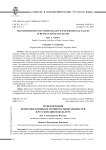
Transformation of communicative and emotional values in Russian linguoculture
Статья научная
Values are generally accepted guidelines that are important for the formation, development and existence of both the individual and society. In his communicative practice, a person relies on universal and culturally-based values, which, in turn, are subject to evolution or degradation at various stages of social development. The authors of the article, guided by the idea of the flexibility and variability of values in certain historical epochs, attempt to demonstrate that at present, due to social and cultural processes, communicative and emotional values in Russian linguistic culture undergo certain change, which transforms the existing system of values. The researchers’ attention is focused on such communicative values as truth and modesty, which seem to be unconditional and absolute moral and ethical guidelines for representatives of Russian linguistic culture. The analyzed material from the National Corpus of the Russian language, Internet forums and examples from live conversation show that in the modern Russian-speaking consciousness, truthful and modest communicative behavior is interpreted and evaluated a little differently than before. Similar to communicative values, the value of emotions is also subject to transformation. As an example of the inversion of the linguocultural value of emotions, we consider the emotion of anger, which is among the universal human emotions. The analysis of modern feature films allows us to conclude that anger and other destructive emotions of the protagonist can be recognized as a constructive force that changes the world for the better, and its positive assessment leads to such behavior being socially approved in real life.
Бесплатно
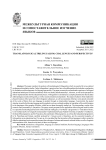
Translatological trilingualism: challenges and perspectives
Статья научная
The paper considers the analysis of translatological trilingualism which is essential for cross-cultural exchange andtranslation studies. Todaytrilingualism is perceived as a form ofmultilingualism thatincludes a mechanism for formation and development of a language personality. The paper presents the accumulated experience of trilingual educational techniques in Russia and abroad, which was starklydemonstrated by I. Alexeeva, as well as the perspectives of their implementation into the educational process. Trilingualism is considered as a complex phenomenon that includes anthropological, social and linguistic, as well as social and cultural components. The aspect ofcultures which implies the phased existence of the same text in three linguistic substances, as well as translation of literaryworks aimed at transfer of the works of fiction from one language to another through an intermediary language. Concurrently, the special attention is paid to the Russian language and its productive role as a cultural mediator in translation of the world literature to the languages of the peoples of Russia, which has not been thoroughly studied yet. The intermediary results of the research were presented byA. Boyarkina. The paper reveals perspectives for application of the trilingual model in order to expand the translatological functions of the artificial intelligence. The Master's programme in “Translation Theory, Cross-Cultural and Cross-Lingual Communication” implementedat Kazan Federal University, revealed by S. Takhtarova, the head of theprogramme, and K. Prosyukova, thecoordinator oftheprogramme, aswell as other educational programmes in St. Petersburg and Almaty, carefully analysed by I. Alexeeva and A. Boyarkina, are the successful examples of trilingualism as an educational tool. To sum up, it is concluded that the interaction of three languages is able tocreate the effective educational environment that ensures the exchange ofcultures and transmits cultural values, as well as linguistic and translation skills, formed on the basis of other two languages.
Бесплатно
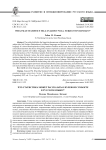
What may statistics tell us about null subjects in Russian?
Статья научная
The article highlights the linguistic phenomenon of abandoning the expletively presented syntactic subject (the Subject Phenomenon) in different languages and focuses on its exemplification by the Russian language. It is shown that despite the existing number of studies on this issue, there is lack of precisely formulated criteria that determine the choice of linguistic means to represent a syntactic subject in the languages, which allow both options (partial subject languages). Based on the discussion of literature on the topic and on the statistical analysis of 16,718 sentence samples from the spoken language, print journalism, and fiction subcorpora of the Russian National Corpus, the article argues that the choice between and overt subjects in Russian sentences depends on factors such as tense, person, and style, but that this dependency is rather weak, owing to the fact that the Russian language system is now in the process of change. -subjectness is not an exclusive syntactic parameter and should be studied along with other aspects like semantics and pragmatics. The statistical data from this study support previously discussed diachronic and acquisition data, and confirm that languages do not nicely distribute themselves into distinct groups, but inhabit a constantly changing continuum.
Бесплатно
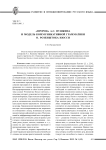
«Пророк» А. С. Пушкина и модель коммуникативной грамматики О. Розенштока-Хюсси
Статья научная
В статье модель коммуникативной грамматики О. Розенштока-Хюсси проецируется на стихотворение А.С. Пушкина «Пророк». Автор выявляет первичную схему универсального метасюжета творчества А.С. Пушкина «поэт - Бог» и связывает ее с функцией императива в теории Розенштока-Хюсси, а также особым типом диалогических отношений внутри потока языка.
Бесплатно
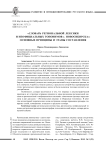
Статья научная
В статье описан опыт создания словаря региональной лексики и показаны пути преодоления одной из ключевых проблем, возникающих у составителей подобных словарей: субъективности при формировании словника. В качестве основного подхода к лексикографированию принят антропоцентрический подход, реализованный в работах В.В. Морковкина и выраженный формулой «словарь - человек». Охарактеризованы четыре этапа работы над словарем: 1) сбор предполагаемых регионально ограниченных слов на базе авторитетных интернет-источников; 2) опрос иногородних жителей, позволивший верифицировать региональный статус единиц, предварительно включенных в словник; 3) опрос жителей г. Новосибирска, позволивший уточнить не только региональный статус языковых единиц, но и их значения; 4) работа с базами данных, в результате которой был верифицирован статус регионально ограниченных лексем и были выявлены типовые контексты их употребления. Особенность словаря заключается в том, что впервые в лексикографической практике в его структуре отражено принятое в науке разделение региональной лексики на регионализмы и неофициальные топонимы: лексические единицы представлены в двух разделах - «Региональная лексика» и «Народные топонимы». В качестве иллюстраций теоретических основ построения словаря приведены примеры словарных статей, помещенных в каждом из разделов словаря.
Бесплатно
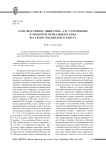
«Сон, счастливое общество» А. П. Сумарокова: к проблеме вербального кода русского масонского текста
Статья научная
В статье выявляются слова-маркеры, с помощью которых организуется специфический масонский текст. Определяется статус вербальных доминант, кодирующих ценностные ориентиры аксиологической картины мира русского масонства.
Бесплатно
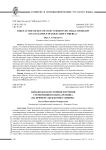
Анекдоты как источник изучения стереотипного образа региона (на примере анекдотов о сибири)
Статья научная
Юмористический дискурс является важным источником изучения стереотипных образов регионов разных стран, фиксирующим наиболее значимые особенности территорий с их населением и эксплицирующим отношение к регионам в обществе. Поэтому лингвистическое изучение региональных стереотипов должно стать отправной точкой в дальнейшем целенаправленном формировании брендов и имиджа российских регионов. В статье анализируются анекдоты о Сибири и реконструируется ее стереотипный образ. Основными методами исследования послужили контент-анализ и фреймовый анализ, заключающийся в представлении содержащейся в анекдотах стереотипной информации в виде фреймов (структур знаний) и их составляющих - субфреймов и слотов. В статье показано, что стереотипный образ Сибири в анекдотах статичен, поскольку они отражают традиционные, укоренившиеся в сознании жителей других регионов России и иностранцев представления о ней как о далеком огромном крае с суровыми климатическими условиями, богатом природными ресурсами, ставшим местом ссылки и тяжелого труда переселенцев. Выявлено, что новым стереотипным признаком стало восприятие Сибири как объекта притязаний других стран. Образ этого региона, созданный в анекдотах, депрессивен: большинство его характеристик имеет ярко выраженный негативный характер. Результаты исследования могут быть использованы в работе по созданию позитивного имиджа Сибири.
Бесплатно
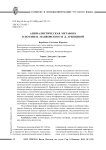
Анималистическая метафора в поэзии В. Маяковского и Д. Арбениной
Статья научная
В статье представлены результаты исследования лингвопоэтических «скреп», существование которых подтверждает типологическую общность фактов литературного процесса начала и конца ХХ века. Материалом для анализа послужили поэтические произведения В. Маяковского и Д. Арбениной. Наиболее частотны для обоих авторов анималистические метафоры, создающие в поэтических произведениях особый модус, отражающий взаимодействие сатирически-инвективного восприятия внешнего мира и самоиронию. Специфика анималистической метафоры в произведениях В. Маяковского и Д. Арбениной состоит в том, что оба автора находят оригинальные способы реализации метафорической образности, не поддающиеся однозначной расшифровке. Эта особенность когнитивной метафоризации делает читателя участником активного диалога с автором, заставляя его для выяснения оснований заявленного в тексте метафорического переноса актуализировать свои фоновые знания. Разновидностью анималистической метафоры, которую активно используют Маяковский и Арбенина, является также автометафора, функция которой заключается в метафоризации образа лирического героя. Разнообразие форм и функций метафорического переноса при их глубинной структурной общности, наблюдаемое в текстах обоих поэтов, позволяет сделать вывод о типологической близости приемов их творческой рефлексии, обусловленной как внешними факторами (сходством кризисных, переходных эпох), так и внутренними (генетическим родством и преемственностью).
Бесплатно

Апостроф как средство устранения числовой омонимии по принципу антистиха
Статья научная
Автор статьи рассматривает развитие у апострофа дифференцирующей функции, реализующейся в современном церковнославянском языке в местоименной парадигме. Сравнение данных, представленных в грамматиках и старопечатных изданиях, показало, что апостроф-расподобитель не был предусмотрен Грамматикой 1648 г., а появился непосредственно в ходе работы справщиков Московского печатного двора, начиная со Служебника 1655 года. Впервые он возникает в формах яже, иже при поддержке производящих форм (я, и), затем распространяется на формы им, имже (по внешней аналогии с прочими формами DatPl) и далее на остальные местоименные омоформы (по внутренней аналогии). Освоение этой орфографической инновации последовательно отражается московскими изданиями 2-й половины XVII в. вплоть до его поэтапной кодификации в грамматиках 1721, 1723, 1725 и 1733 годов. Местоименная природа апострофа-расподобителя предопределила ограниченность его функционирования, однако приобретение им дифференцирующей функции стало необходимым этапом формирования современной системы антистиха. Завершению этого процесса может способствовать расширение сферы функционирования апострофа, имеющее прецедент в Грамматике Ф. Максимова (1723). Представленные в статье данные о развитии у апострофа дифференцирующей функции могут быть использованы для идентификации московских изданий наряду с другими инновациями периода Никоновской справы.
Бесплатно
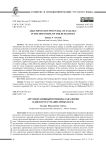
Аргументативный потенциал аналогии в дискурсе гуманитарных наук
Статья научная
В статье на материале научных текстов гуманитарной направленности выявлены функции различных типов аналогии в аргументативном дискурсе, обоснованы критерии эффективности рассуждений по аналогии в научной аргументации. Установлено, что широкий функциональный диапазон аналогических рассуждений формируется двумя значениями: собственно аргументативным и парааргументативным. Собственно аргументативное значение обусловливает использование аналогии как особого типа схем аргументации. Аналогическая схема связана с рациональным воздействием на адресата и реализуется за счет буквальной аналогии, которая выполняет познавательную, доказательную, эвристическую, интерпретирующую, нормативную, аксиологическую функции. Парааргументативное значение аналогии способствует поддержанию аргументации, усилению убеждающего эффекта. Эта прагматическая цель достигается посредством непрямой (фигуральной) аналогии, которая воздействует на адресата через образно-эмоциональный канал и применяется для наглядного объяснения, популяризации изложения, эмоционального сближения с адресатом, психологической интенсификации аргументативного воздействия. При нарушении нормативных критериев аналогической аргументации возникают погрешности, которые квалифицируются как неправильное применение аргументативных схем либо как тактические ошибки. Понимание прагматической специфики разных видов аналогии, умение применять их в научной коммуникации рассматривается как составляющая аргументативной компетенции субъектов гуманитарного дискурса.
Бесплатно
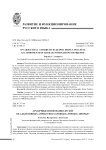
Архаичные именования друзей: об адъективных атрибутивах кровные, прямые, мирные
Статья научная
В статье рассматривается вопрос об изменении сочетаемости слова друг в истории русского языка. В качестве объекта исследования избраны словосочетания кровный друг, прямой друг, мирный друг, зафиксированные в поэтических произведениях А.С. Пушкина и отсутствующие в узусе носителей современного русского языка. Изучение указанных атрибутивных сочетаний проведено с использованием методов дефиниционного, контекстного, лингвокультурологического анализа. Привлечен текстовый материал, представленный в Национальном корпусе русского языка. Установлено, что выражением кровные друзья могли обозначаться ‘люди, связанные крепкой дружбой’ и ‘люди одного класса’. Показано, что признак физического родства послужил основой для когнитивного осмысления духовной близости и социально-классовой идентификации, что связь между прямым и переносным значениями культурно опосредована обычаем побратимства - формы искусственного родства, отмечаемой у многих народов. В большинстве примеров употребления речевого оборота прямой друг актуализируется семантический компонент ‘честно, прямо высказывать свое мнение кому-либо’. Выражение мирный друг предложено толковать как основанное на удвоении смысла ‘находящийся в отношениях согласия’. Результаты исследования могут быть учтены при составлении словарей русского языка, а также использованы в преподавании языковедческих дисциплин.
Бесплатно

